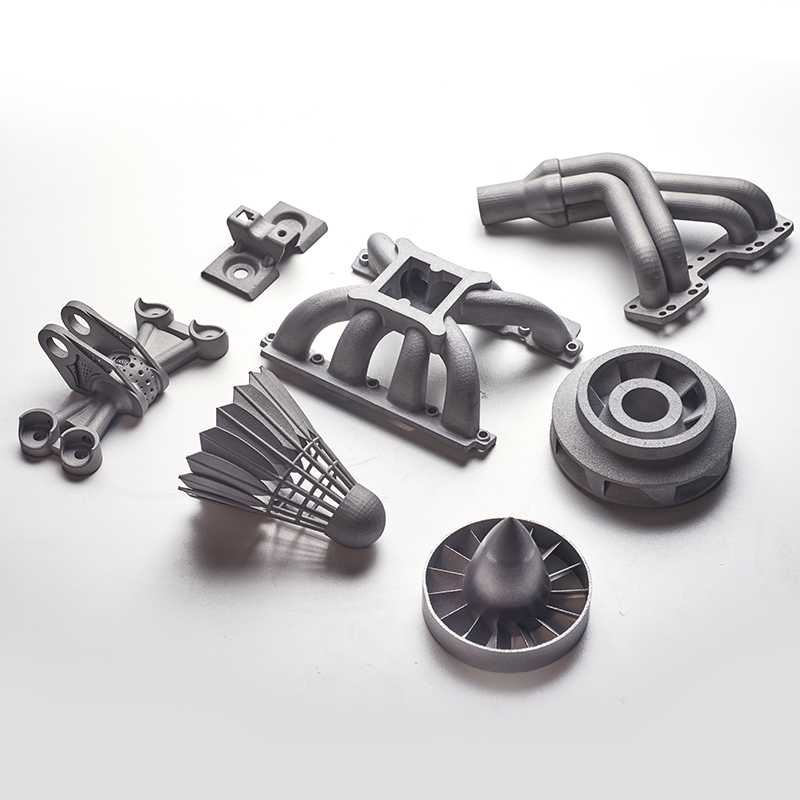Email format error
Email cannot be empty
Email already exists
6-20 characters(letters plus numbers only)
The password is inconsistent
Email format error
Email cannot be empty
Email does not exist
6-20 characters(letters plus numbers only)
The password is inconsistent


Comprehensive Guide to 3D Printer Component Manufacturers
In the realm of additive manufacturing, 3D printers have revolutionized prototyping, production, and even hobbyist creativity. Key to the functionality and quality of these printers are their components, sourced from specialized manufacturers worldwide. In this guide, we delve into the world of 3D printer component manufacturers, exploring their roles, types of components they produce, and considerations for choosing the right supplier.
Introduction to 3D Printer Component Manufacturers
Understanding 3D Printer Components
Before exploring manufacturers, it's essential to understand the components that make up a 3D printer:
- Extruder: Responsible for melting and extruding filament.
- Heated Bed: Provides a stable temperature for printing.
- Stepper Motors: Control movement along the X, Y, and Z axes.
- Hotend: Melts filament before deposition.
- Print Bed: Surface where prints adhere during printing.
- Controllers: Manage printer operations and interface with software.
Role of Component Manufacturers
3D printer component manufacturers specialize in designing and producing these crucial parts. They cater to a wide range of applications, from industrial-scale printing to desktop hobbyist models, each demanding specific performance and durability standards.
Types of 3D Printer Components
Extruders and Hotends
Direct Drive vs. Bowden Extruders
Direct drive extruders are mounted directly above the hotend, offering precise filament control. Bowden extruders use a tube to guide filament to the hotend, reducing moving mass but requiring precise calibration.
Metal vs. PTFE-lined Hotends
Metal hotends withstand higher temperatures and abrasive filaments but may require more complex cooling solutions. PTFE-lined hotends are more forgiving for beginners but have temperature limitations.
Print Beds and Build Surfaces
Glass vs. PEI Print Beds
Glass beds offer flatness and easy cleaning but require adhesion aids like hairspray or adhesive sheets. PEI beds provide excellent adhesion when heated and are durable but can be challenging to remove prints from.
Controllers and Stepper Motors
8-bit vs. 32-bit Controllers
32-bit controllers offer faster processing and smoother motion control, suitable for complex prints. 8-bit controllers are cost-effective and adequate for simpler applications.
NEMA 17 vs. NEMA 23 Motors
NEMA 17 motors are compact and energy-efficient, suitable for most desktop printers. NEMA 23 motors are larger and provide more torque, suitable for printers with heavy print heads or large build volumes.
Materials Used in 3D Printer Components
Metals
Aluminum and Stainless Steel
Aluminum is lightweight and corrosion-resistant, ideal for structural components. Stainless steel offers strength and durability, suitable for high-wear parts like nozzles.
Polymers
PLA and ABS
PLA is biodegradable and easy to print but has lower temperature resistance. ABS is durable and heat-resistant but requires a heated print bed and well-ventilated workspace.
Electronics
PCBs and Microcontrollers
Printed circuit boards (PCBs) provide electrical connectivity and component mounting. Microcontrollers like Arduino and RAMPS manage printer functions and interface with software.
Choosing the Right 3D Printer Component Manufacturers
Factors to Consider
1. Quality Standards: Look for manufacturers with ISO certifications or proven quality control processes.
2. Compatibility: Ensure components are compatible with your printer model and intended applications.
3. Customer Support: Evaluate manufacturer support for technical inquiries and warranty issues.
4. Lead Times and Logistics: Consider production lead times and shipping logistics, especially for international suppliers.
Researching Manufacturers
1. Online Directories: Use platforms like Alibaba, ThomasNet, or industry forums to find reputable manufacturers.
2. Reviews and References: Seek feedback from other users or industry experts to gauge reliability and performance.
3. Samples and Prototyping: Request samples or prototype components to assess quality and compatibility before bulk orders.
Case Studies and Success Stories
Example 1: Industrial 3D Printer Manufacturer Case Study
- Challenge: Need for robust extruders capable of continuous operation.
- Solution: Partnered with a manufacturer specializing in high-temperature extrusion systems.
- Outcome: Improved print quality and reliability, reduced downtime.
Example 2: Hobbyist 3D Printer Enthusiast Case Study
- Challenge: Upgrading printer for flexible filament compatibility.
- Solution: Found a manufacturer offering specialized direct drive extruders for flexible materials.
- Outcome: Expanded printing capabilities, enhanced print quality for flexible designs.
Future Trends in 3D Printer Components
Emerging Technologies
1. Multi-material Printing: Developments in extrusion systems and hotends enable printing with multiple materials in a single print.
2. Smart Controllers: Integration of IoT and smart controls for remote monitoring and automated adjustments.
3. Biocompatible Materials: Advancements in materials science for medical and food-grade applications.
Sustainability and Recycling
1. Filament Recycling: Innovations in filament extrusion from recycled materials to reduce waste.
2. Energy-Efficient Designs: Focus on energy-efficient components and printers to minimize environmental impact.
Conclusion
Navigating the world of 3D printer component manufacturers requires careful consideration of quality, compatibility, and technological advancements. By understanding the types of components available, materials used, and factors influencing supplier choice, you can optimize your 3D printing experience. Whether you're a hobbyist exploring new capabilities or an industrial user scaling production, choosing the right manufacturers ensures reliable performance and innovation in additive manufacturing.
In summary, selecting reputable 3D printer component manufacturers is crucial for achieving optimal printing results and pushing the boundaries of what's possible with additive manufacturing technology.

